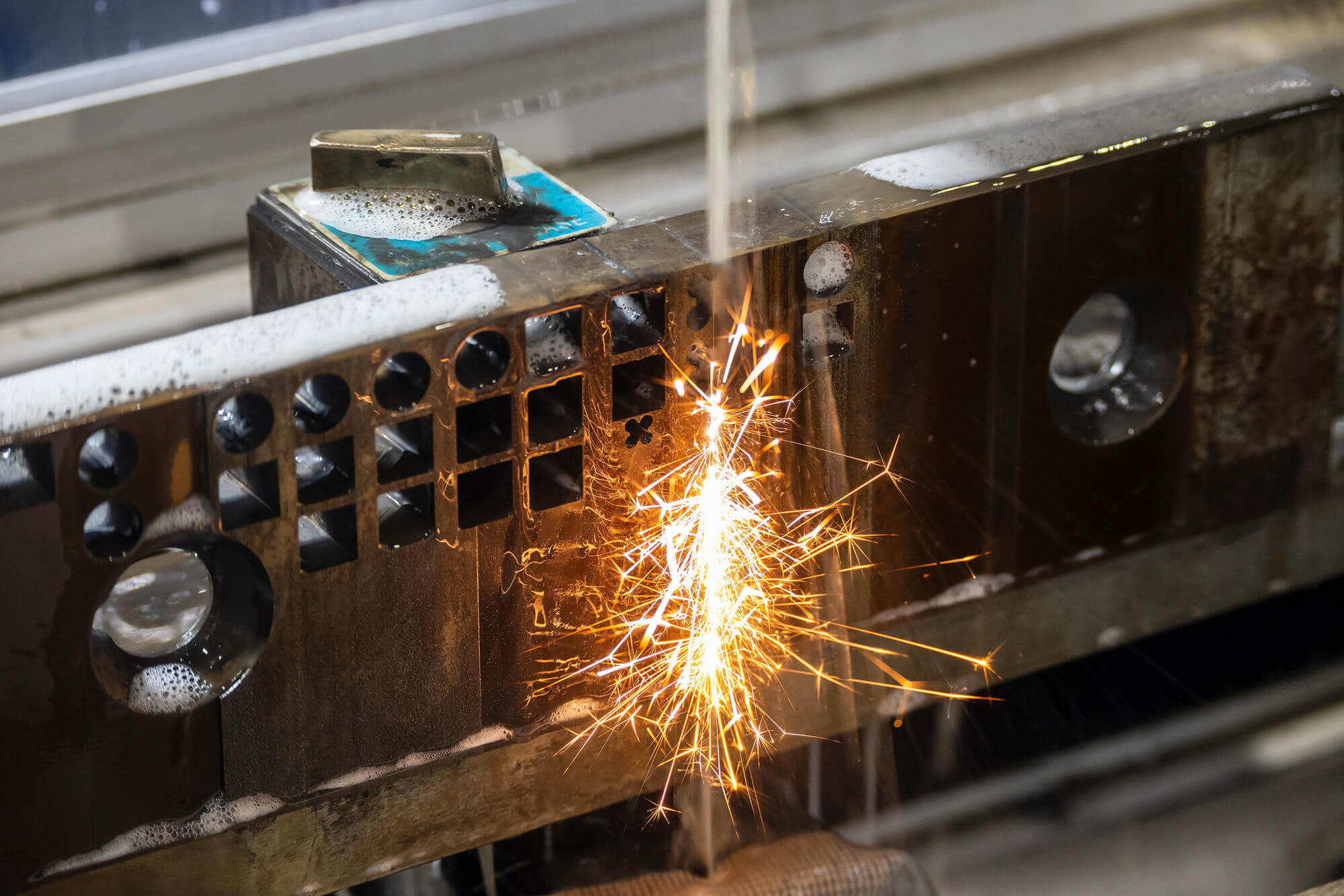Wire EDM Services
The machinists at Green Oak Tool are skilled in Wire EDM & EDM Hole Drilling Services
Our technicians have decades of experience in Wire EDM. Green Oak Tool provides wire EDM machining and EDM hole drilling services, with state-of-the-art, CNC-operated production equipment to create precision parts and components that meet your specifications.
The Electrical Discharge Machining Process
An electrical spark is created between an electrode and a workpiece. The spark is visible evidence of the electricity flow. The spark produces intense heat with temperatures reaching 8,000-12,000 degrees Celsius, melting almost anything. The EDM process normally doesn’t affect the heat treat below the surface. The spark is carefully controlled and localized so that it only affects the surface of the target material. The spark takes place in the dielectric of deionized water, and the conductivity of the water is controlled. This makes it an ideal environment for the EDM process. Water also acts as a coolant and flushes away eroded metal particles.

Wire-Cut EDM
EDM cutting goes through the entire workpiece. A hole is drilled in the workpiece from an edge. Each electrical discharge creates a crater in the workpiece and an impact on the tool. The wire can be inclined, which can make it possible to create tapers or different profiles at the top and bottom. There is never any mechanical contact between the electrode and workpiece. The wire is usually made of stratified copper or brass.
Depending on the surface finish, a part will either be one cut or it will be roughed and skimmed. The wire passes through a solid part for one cut and drops a slug or scrap piece when done. This usually gives sufficient accuracy, but skimming may also be necessary.
Wire Electrical Discharge Machining
This is also known as wire-cut EDM, wire cutting, EDN cutting, EDM wire cutting, wire burning, wire erosion, wire cut electric discharge machining, and ‘cheese-cutter’ EDM.
Wire electrical discharge machining (WEDM) uses a metallic wire to cut and shape workpieces. It is often a conductive material with a thin electrode wire that follows a precisely programmed path.
There is no direct contact between the wire and the workpieces during the wire cutting process. This allows for machining without distortion in the path of the wire or the shape of the material. The wire is rapidly charged to the desired voltage, and also surrounded by deionized water. When the voltage reaches the correct level, a spark jumps the gap and melts a portion of the workpiece. Deionized water cools and flushes small particles from this gap.
Shapes a Wire EDM Machine Can Produce
EDM machines are a type of CNC machine that can move along four independent axes to generate taper cuts. A stamping die can be machined with 1/4 degree taper. A mold can be created with one degree taper in some areas and two degrees in other areas. Extrusion dies or nozzles and horns can be cut by changing tapers. A detailed shape at the top of a workpiece can transition to a circle on the bottom.
EDM Cutting Applications
-
Narrow slots and complex shapes
-
Delicate, hard, expensive, exotic or weak materials
-
Used with thick parts requiring good finishes and accuracies
-
Delicate or small workpieces that can be damaged during conventional machining or other techniques
-
Larger parts requiring accurate tolerances
Green Oak Tool